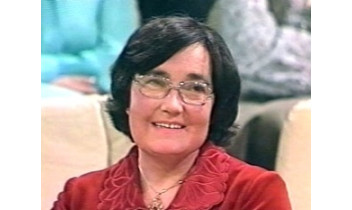
One in a Million - media success story
I still remember Pat Seed. It was over 40 years ago and I was a raw young journalist, but I still remember her name and her slogan – One in a Million – and that’s the mark of a superlative media health campaign.
What inspired Pat to start her own campaign?
Pat was a journalist herself when she was diagnosed with cancer and given six months to live in Spring 1976. She actually lived another eight years, and the appeal she started has now raised more than £10million.
Pat was a patient of the Christie Hospital, a specialist cancer treatment centre in Manchester, UK, when she heard that they desperately wanted to acquire the then new technology of a Computerised Axial Tomography (CAT) scanner.
The problem was that the law at the time meant that hospitals were not allowed to appeal for the public’s help in getting such equipment. This annoyed Pat, and so she set to work.
Using her own name (the Pat Seed Appeal) and personal story to win over hearts and minds, she set an initial aim of raising £500,000 for a scanner. This was soon raised to £1.75million to house the scanner and run it for 10 years.
What did Pat do?
Pat’s slogan: ‘One in a Million’ was printed on badges, stickers and balloons, and people gladly paid £1 to wear them. Pat made sure her story appeared in all the local papers and on regional radio and TV, and soon local schools and community groups were holding special events to raise money for her cause.
Pat personally attended as many fundraising fetes, craft fairs and auctions as she could throughout North West England. Celebrities vied to have their picture taken alongside her for the publicity.
Meanwhile she gained the support of her local MP for a change in the law. Soon other MPs were rallying to her cause and she ended up meeting Prime Minister Margaret Thatcher. Needless to say, the law was changed to allow hospitals to appeal for funds.
Within three years, the CAT scanner was up and running in a purpose-built Pat Seed Department at Christie Hospital. Pat appeared on the TV programme This is Your Life, she was awarded the MBE and published an autobiography, ‘One Day at a Time.’
So, more than 40 years later, I still believe Pat ran an exemplary campaign, and we can learn lessons, even in the age of the internet, Facebook, Twitter and the like.
What did Pat get right?
- She personalised the issue. She understood that the media needs human interest stories, not abstract reports and statistics that few will relate to. One person’s story can capture the imagination and represent all the others who stand to benefit from your campaign.
- She was passionate about her cause. Pat could engage people’s emotions because she felt strongly about the issue of hospitals being prevented from holding their own fundraising appeals and she did something about it.
- She set clearly defined goals and made sure everyone knew what they were. In every article she wrote or interview she gave, she never lost sight of the big picture, the ultimate goal – and associated it back to her own story.
- She adopted a memorable slogan which people could relate to - ‘One in a Million’.
- She engaged the support of politicians and celebrities – people who the media were interested in anyway, and this added momentum to her campaign.
- Pat never gave up – she could have closed the fund after those first three years, but she kept on until her death in 1984. Even after that, her friends carried on raising money for more hi-tech equipment at the Christie in her name. The hospital eventually took over administration of the fund, merging it with its own charity in 2010, and to date it has raised more than £10million.
Using the media today
So, Pat, you can teach us lessons even now. We have more media facilities at our fingertips than Pat ever did. We can put together a story and a picture (never forget the picture) and wing it on its way in seconds to our local media. Or put it on Facebook or a blog, and use hashtags/handles to draw attention to it on Twitter or Instagram.
Local radio has lots of time to fill – they welcome interview suggestions. When being interviewed, keep it simple, make sure you have three things you want to say and hammer them home, repeatedly if necessary. Don’t read it from a document – that always sounds false – put enthusiasm in your voice, and be sure to include your essential information: the date, time, place of an event, or a web address or email.
Local newspapers are generally run by a skeleton staff these days – they welcome press releases and well-composed, sharp and well-lit pictures. Always include a caption for your picture (clearly naming who’s in it) and your contact details so they can ask questions or follow up your story.
In addition, you could offer yourself as a potential interviewee to be contacted whenever they need a reaction/response to a larger issue – for instance, if a story comes up about air pollution, could you respond as an asthmatic or the parent of an asthmatic child?
Above all, home in on the personal story. What journalists want is human interest. Would I have remembered an appeal for a CAT scanner 40 years ago? No, but I remembered Pat Seed – truly One in a Million.
Written by Barbara Crossley, retired journalist and member of ELF bronchiectasis patient advisory group and EPAP patient ambassador